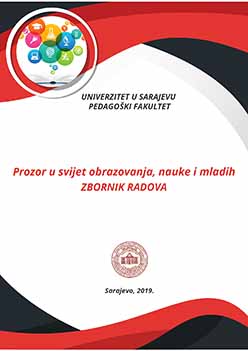GLAZBA I DIJETE S POSEBNIM POTREBAMA
MUSIC AND A CHILD WITH SPECIAL NEEDS
Author(s): Mirna Marić, Sanja Tatalović-Vorkapić, Doris Brlić
Subject(s): Preschool education, Inclusive Education / Inclusion
Published by: UNIVERZITET U SARAJEVU – PEDAGOŠKI FAKULTET
Keywords: music; children with difficulties; listening to music; motor activities; social contact;
Summary/Abstract: The activities oriented towards ananalytic approach, with special emphasis on rhythmand rhythmic patterns which have a strong influence on the whole some development of a child, can also be used successfully when working with children with various kinds of149difficulties. When working with children, this is primarily achieved throug hintegratedactivities, the effects of which can be seen in the development of self-expression, establishment of social contact, improvement of communicative skills and interpersonalrelationships, development of a psychologically optimal personality, improvement of personal autonomy and creativity, of rhythm of speech, voice perception and the alleviationof pathological behavioural patterns. Music has always been considered an integral part ofevery individual's life as well as a key link between various cultures. The results of recentresearch indicate great efficacy and beneficial effects of the music therapy on thedevelopment of children with developmental difficulties. Music therapy encourageschildren's development in many different aspects of life (physiological, intellectual, socialand emotional etc.). Based on these discoveries the purpose of this research is defined: to determine how listening to music affects the abilities of children with difficulties. Based on systematic observations that the educators of a small group of children with difficulties made, two hypotheses were tested. Results of the research indicate that children with developmentaldifficulties of ten react to music with motor activities, which confirms first hypothesis(„Listening to music encourages children to engagein motor activities“), whilst the secondhypothesis („Listening to music encourages children to achieve social contact (eye contact, touch etc.)“) is still not confirmed. These results are discussed bearing in mind the aim ofachieving the greatest possible well-being of the children with special needs, throught heeducational use of music, and guidelines are offered for future research in this field.
Book: Prozor u svijet obrazovanja, nauke i mladih
- Page Range: 148-161
- Page Count: 14
- Publication Year: 2019
- Language: Croatian
- Content File-PDF

